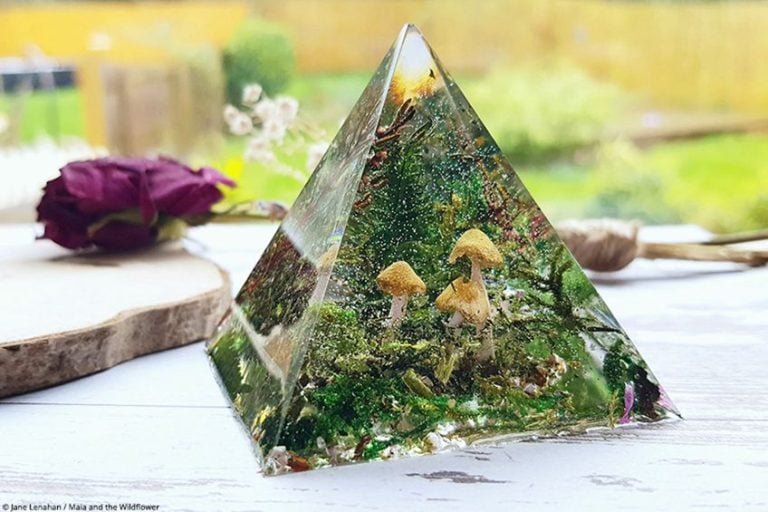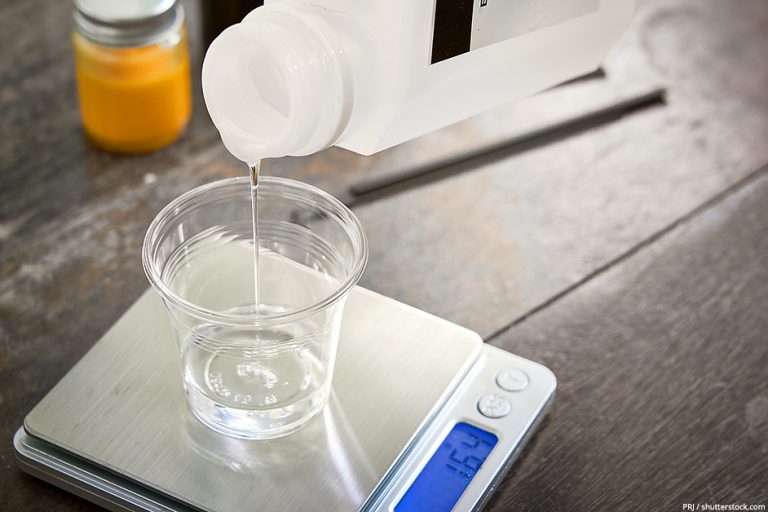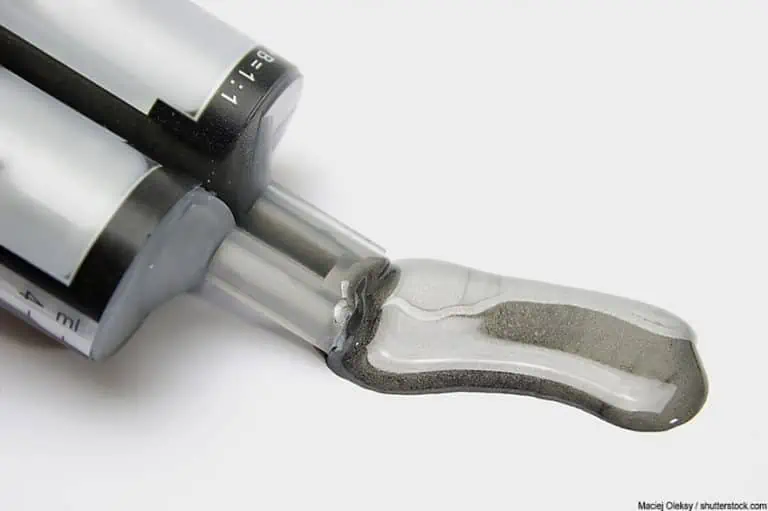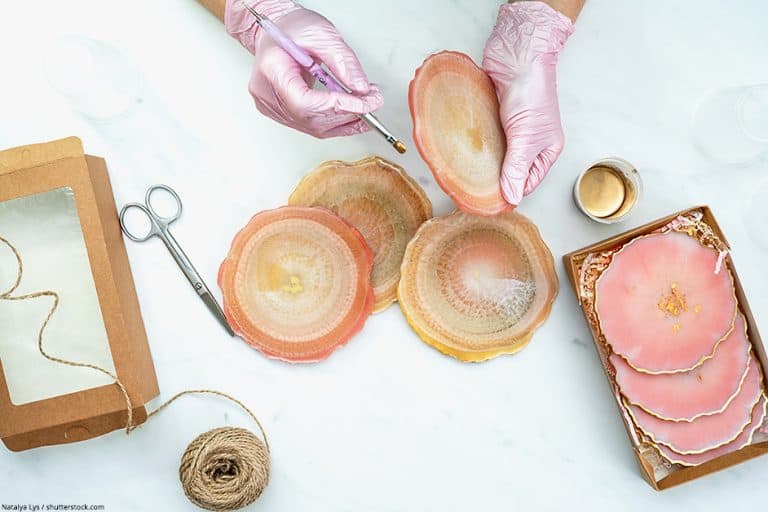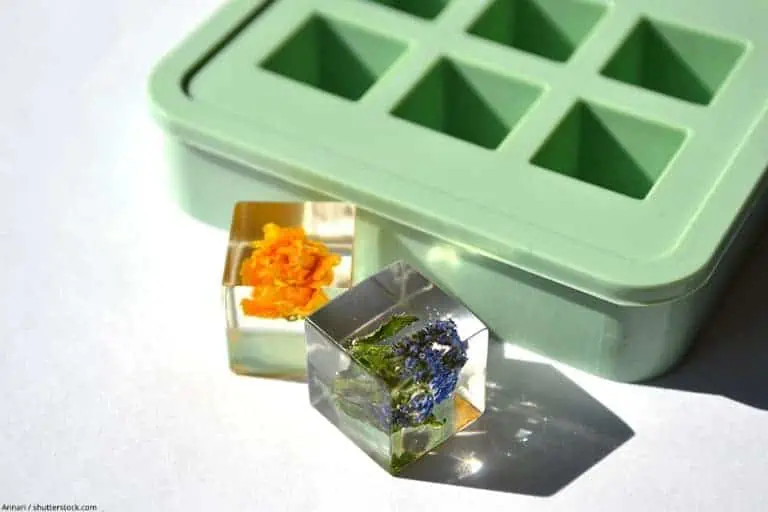Pressure Pot for Resin Casting – Best Resin Pressure Pots
This post may contain affiliate links. We may earn a small commission from purchases made through them, at no additional cost to you.
When you are involved with resin castings, whatever project it may be, you always want the results to be as perfect as it can be. This means that you try to make sure you end up with a bubble-free final product, leaving you with a crystal-clear casting. Whether you are an expert in this field or just a beginner, everyone is faced with the same problem. Placing your casting in a pressure pot is the only sure way to achieve a bubble-free casting every time.
Table of Contents
- 1 What is a Pressure Pot for Resin Casting?
- 2 Why do you put Resin in a Pressure Pot?
- 3 Pros and Cons using a Pressure Pot for Resin
- 4 What you need for using the Pressure Pot
- 5 Best Pressure Pot for Resin
- 6 How to use the Pressure Pot for Casting
- 7 Safety Notes
- 8 What is better for Resin Casting: Vacuum Chamber or Pressure Pot?
- 9 Should you make your own Pressure Pot?
What is a Pressure Pot for Resin Casting?
Pressure Pots for casting resin are pressure chambers that provide the ultimate method of creating resin castings and molds that are bubble-free and air trap-free. These pressure pots are different sizes and can be used for resin castings. In this article, we will be considering only two sizes:
- The first or smaller size is a 2.1/4 gallon pot that is 8.3/4 inches in diameter and 11.5 inches deep. It is recommended that you set your pressure to 50 Psi for pressure castings.
- The next size is a 5-gallon pot that is 13-inches in diameter and 14.3/4 inches deep. It is recommended that you set your pressure to 60 Psi for pressure castings. This particular size of pressure pot should be adequate for all of your resin castings.
Why do you put Resin in a Pressure Pot?
When you mix your resin you unavoidably create a certain amount of air bubbles. To get rid of bubbles, it should be enough to knock the sides of your mold gently for small DIY resin castings. You can also use some form of vibration on the mold, which should get rid of most of the bubbles.
However, if you are doing more complex resin castings, the only way to solve this problem is by putting your casting mold into a resin pressure pot. By using this method, the pressure will crush the air bubbles to a microscopic size. You will not be able to see the tiny bubbles with the naked eye, leaving you with a beautiful crystal-clear resin casting. Make sure you leave your resin casting in the resin casting pressure pot for the full curing time.
However, it is not only bubbles that cause a problem with your resin castings. When you have a casting, which is more complex, there might be certain places that are thin or difficult, and the resin will not flow easily into these areas. This will result in air being trapped there. Using a resin casting pressure pot is the only sure way to force the trapped air out of those difficult areas and force the resin into them, leaving you with a crystal-clear casting.
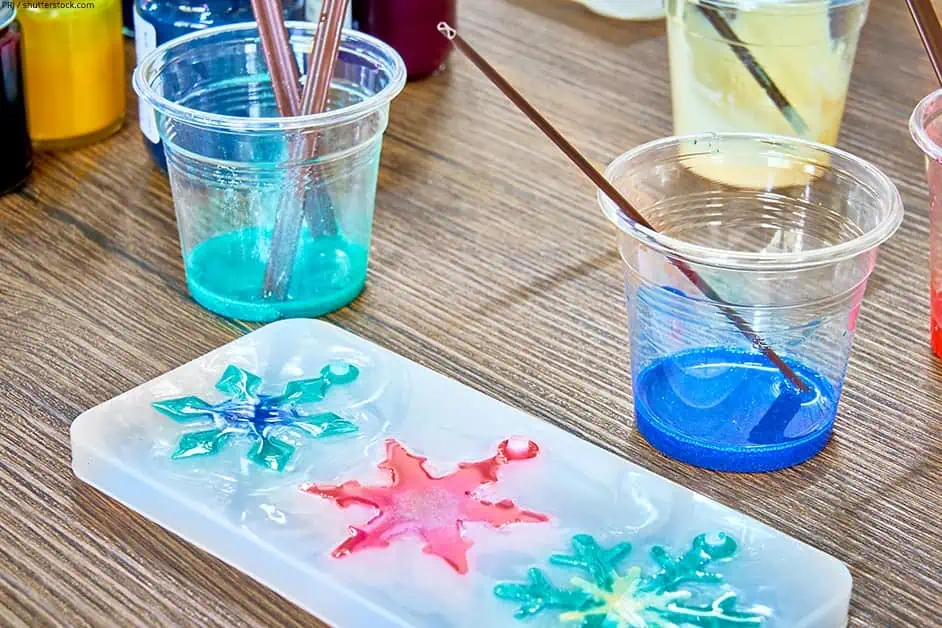
Pros and Cons using a Pressure Pot for Resin
Pros
- The Pressure Pot provides you with a crystal clear bubble-free as well as an air trap-free resin casting.
- A simple and very easy solution for degassing your resin castings
- If you have a variety of smaller items to degas, then this method is an affordable way to do this.
Cons
- If you use a pressure pot for casting resin and your mold is made of soft rubber, once you release the pressure the bubbles will return.
- The same applies to molds that are made of soft rubber, they tend to collapse in the areas where the air has been trapped.
What you need for using the Pressure Pot
Before you can use your pressure pot you will have to have the following fittings and equipment:
- First of all, you will need to purchase a compressor with a motor that has a minimum of 3.5 H.P that can produce an air pressure of 90 Psi or less, as well as a ¼ inch connection air hose.
- Safety relief valve
- Pressure gauge that can take pressure more than 60 Psi
- ¼ inch inlet connection
- A gasket to seal the lid
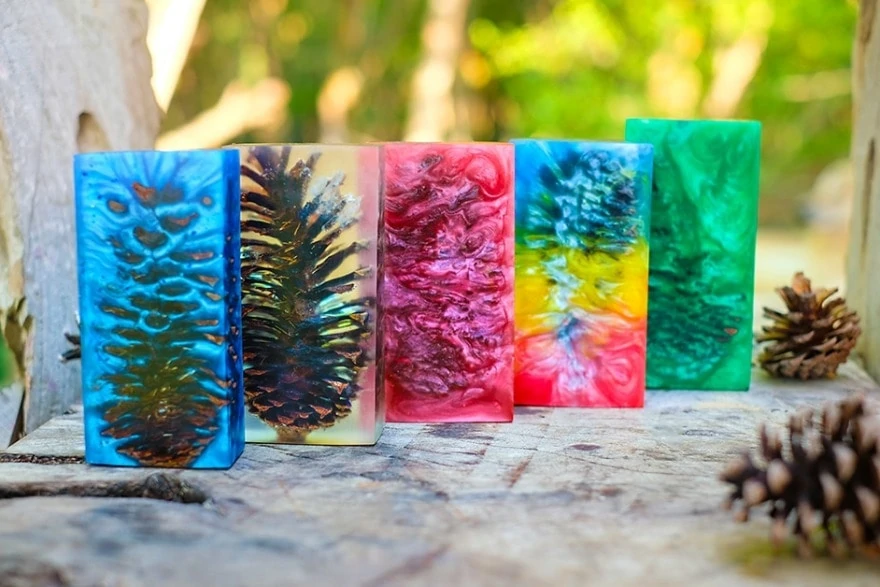
Best Pressure Pot for Resin
Professional Pressure Pot for Resin: California Air Tools 10 Gallon Pressure Pot
- 10 Gallon Pressure Pot
- Easy To Use Agitator
- Operating Set Pressure 60 PSI
- Brand Name: California Air Tools
The California Air Tools 10 Gallon Pressure Pot Model Number 336 has the following features:
- A steel tank that is coated with Teflon that makes cleaning a lot easier.
- It is supplied with casters to move around easier as well as making it more stable. These casters can be removed if desired.
- A double output regulator is attached.
- There is also a pressure relief valve
- An on/off ball valve
- There is a built-in hand-operated agitator.
- The lid has a sealing gasket and wing nut clamps.
- The maximum pressure of the pot 60 Psi
- The working pressure of the pot is 20 to 30 Psi
- The inside diameter measures 14 ¾ inches with a depth of 17 ¾ inches.
The California Air Tools 10 Gallon Pressure Pot is specially designed to be used for spray painting, which is why it has a hand agitator. However, it is quite easy to convert into a pressure pot for casting resin.
There are two ways to make this conversion:
- The agitator needs to be removed, which is very easy to do, but once this is done you need to seal the hole in the lid. You can do this by using a 5/8 x 3 inch bolt with two 5/8 x 2-inch steel washers together with two 5/8 x 2-inch neoprene washers for sealing the hole. You could also use a 5/8 – 11 x 3-inch hexagonal cap screw, then seal it with rubber washers.
- Or you could simply cut off the agitator just below the safety regulator and you have your conversion. However, many say this may not be as simple as it sounds.
Once converted, you can now use the whole area of the pot for your pressure pot resin.
Pros
- It is very easy and cost-effective to convert into a resin casting pressure pot.
- This method is very affordable for resin pressure casting.
- Its 10 Gallon size makes for ample space for all of your casting in one operation.
- The Teflon coating inside makes for easy and hassle-free cleaning.
- The wing nut, which fastens the lid down makes it easy and effective to seal.
- Even though the working pressure is 20 to 30 Psi, there is no problem in going up to 60 Psi.
Cons
- Many have had the experience where the pressure release valve and safety bracket fail at 25 Psi. This means that it is not recommended for mold making.
So, if you want a resin casting pressure pot, the California Air Tools 10 Gallon Pressure pot is for you. Unlike many of the standard pressure pots for casting resin, there is ample space if you have a large number of smaller molds or a fewer number of larger molds. This pressure pot will take them all in one operation, saving you time and money. All reviews on this product are 4 to 5, so it is something to look into.
Best Price Performance Pressure Pot: Shop Fox Pressure Pot
- Maximum pressure is 45 PSI
- Works with any pressure feed HVLP or conventional spray gun
- Hose not included
The Shop Fox Pressure Pot Model Number W1799 has the following features:
- A galvanized steel tank that has a 2 ¼ Gallon capacity
- Double output regulator attached
- There is a pressure/safety valve
- When you remove the lid, the clamps and lid gasket stays fixed.
- The maximum pressure of the pot 45 Psi
- The working pressure of the pot is 25 to 30 Psi
The Shop Fox Pressure Pot has a 2 ¼ Gallon capacity and was intended to be used as a paint pot. However, it is quite easy to convert into a resin pressure pot. This conversion can be done in the following way:
To convert into a resin casting pressure pot, cut off the metal that feeds the paint inside the tank as short as you possibly can. You will also have to change the fittings to convert to a pressure pot for resin from a ¼ inch NTP to a ½ inch compression.
All the reviews suggest that this product cannot be used as a pressure pot for casting without first changing all the components, such as the pressure cut-off valve and regulator. Many who have done this conversion have found that it is worthwhile changing these components to fit with a much higher working pressure, so you can use it at 80 Psi without any problems.
Pros
- This product comes at a very affordable price for resin pressure casting.
- After you have done the conversion, you can use it at a resin casting pressure pot and you will be able to go up to 80 Psi.
- It is a great product and produces excellent resin castings.
Cons
- This product cannot be used as a pressure pot for resin castings straight from the box. It needs to be converted and all components need to be replaced.
- Many find it difficult to tighten the lid bolts and after it is fastened it leaves dents in the lid.
This is an excellent buy if you are looking for a pressure pot for casting resin, as it is very affordable. All you need to do is convert it into a resin pressure pot and you have an excellent product. The advantage is that it can be used for pressures up to 80 Psi after you have replaced the necessary components.
How to use the Pressure Pot for Casting
When you work with resin products and molds, you always want the finished item to have a crystal clear and bubble-free appearance. This effect is only guaranteed if you make use of a pressure pot during the curing process. Let us now consider step by step how to use a pressure pot for castings.
Prepare your Casting or Mold
If you have a mold and want to cast your item, then you mix your resin and hardener as per instructions and pour into your mold. Making your own mold? Mix Part A and B of your mold making kit as per instructions and pour over your master or original item. Want to embed any particular item? Mix your resin and hardener and pour it over your item you want to embed.
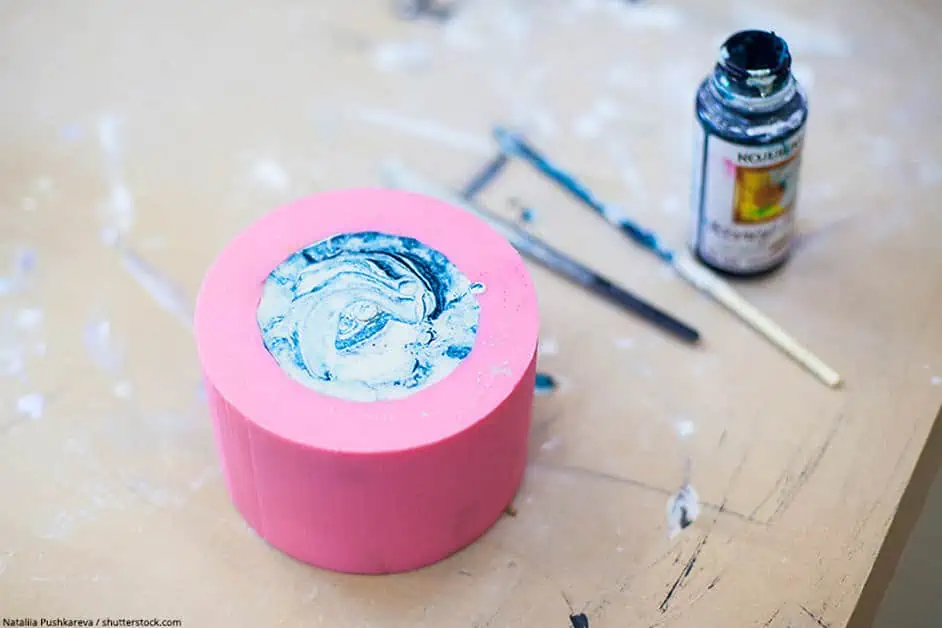
Prepare your Pressure Pot
There are several things you need to consider for a problem-free experience:
- There are various sizes of pressure pots, so you need to make sure that the one you have is big enough to take all your molds or castings.
- Make sure you have the right size of compressor, this will give you the required PSI that is needed for your casting. A compressor that is capable of 80 to 110 Psi is all you will need.
- Ensure that you have the right size connecting hose for your pressure pot.
- Check to see if you have the correct fitting on your pressure pot for the connecting hose, usually a ¼ inch.
- Make sure you have the right pressure gauge fitted to your pressure pot, which means it must be able to take up to 80 or 110 Psi.
- Take your casting or mold and put them into the pressure pot and close the lid and seal it by tightening the securing bolts. Make sure that your securing bolts are properly tightened before you switch on your compressor.
- Ensure that your pressure/safety valve is set to the correct Psi.
- Switch on your compressor until the required Psi is reached. You can then switch it off and it should be able to hold that pressure if there are no leaks. If you do find a leak, just turn your compressor on again until the required Psi is reached.
- Remember, your casting or mold needs to stay in the pressure pot for the entire time it takes to cure. This is normally around 12 hours.
- Once done, you need to open the pressure release valve and let the pressure decrease inside the pressure pot.
- Remove your casting or mold from the pressure pot.
Finishing Touches
Your casting is now set, all you still need to do is to de-mold it, clean and polish it until you are satisfied with the finish. You should now have a crystal clear, bubble-free perfect casting.
Safety Notes
- Make sure that your pressure relief valve is set at the correct Psi.
- Ensure that all your gauges like the pressure relief valve, the pressure regulator all have higher Psi values than what you are going to use.
- Make sure that your pressure pot lid is securely fastened before pressurising it.
- Remove your pressure input pipe as soon as you have reached the Psi required.
- For the pressure pot to give you the bubble-free product you want, you need to leave your casting in the pressure pot until it is properly cured.
What is better for Resin Casting: Vacuum Chamber or Pressure Pot?
The basic rule to apply in this case is a Vacuum chamber is good to remove any air bubbles from flexible rubber products. Whereas, the Pressure pot is good to use for mold making or for resin castings that set into a solid-state.
The vacuum chamber can also be used for degassing resins that cure to a solid-state, but it is not advisable as it takes time to build up a vacuum and some resins are fast setting and will cure before it has a chance to remove the air bubbles.
Let us now consider these two methods separately:
Vacuum Degassing
This method is used to pull the air bubbles that are trapped out of the resin with vacuum suction. Vacuum Degassing is highly successful with materials that have a high viscosity as well as the tension on the surface of the material, such as silicone rubber. To do this properly you will normally require a vacuum of 26-inch Hg, but this will largely depend on the type of resin you are using. The main advantage of using this method is that your material can be put into its mold before it sets because all the air bubbles have already been removed.
Pressure Pot
Another method used to remove air bubbles is to put your resin under pressure. Take note that this method does not remove the air bubbles, but rather compressors them so that they are microscopic, and you are unable to see them with the naked eye.
The one disadvantage of this method is that you will have to leave your casting in the pressure pot until it has cured. The other disadvantage is that if the pressure is too great, it may cause deformities to your casting.
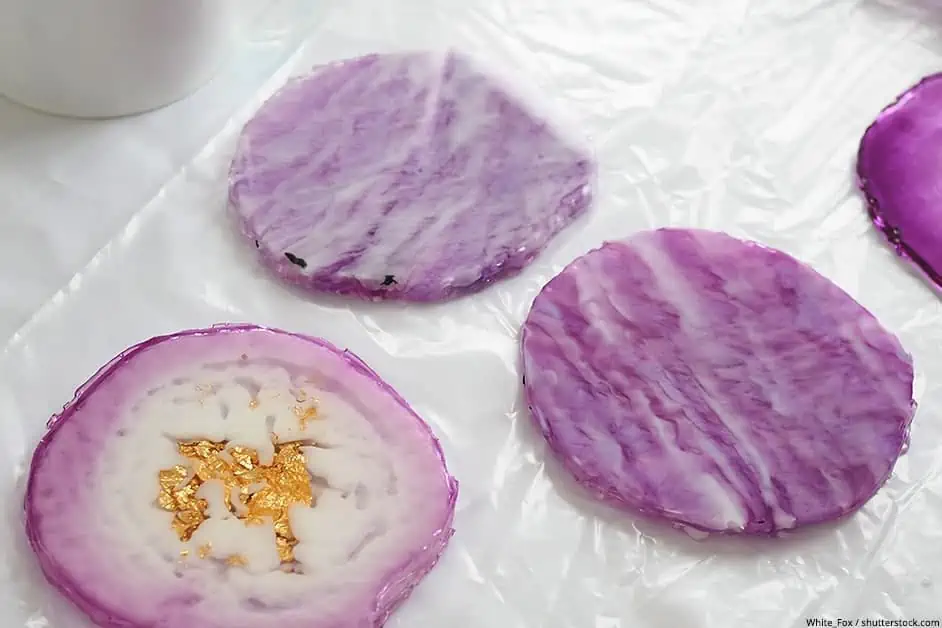
Should you make your own Pressure Pot?
This type of exercise is best left to the professionals that have more experience!
You might have an item you need to put into a pressure pot for casting resin, but it is too big to fit into any one of them on the market, so you decide to build your own pressure pot. This is to be taken seriously, as there is high pressure involved. Make a slight error and it could become quite dangerous.
There is a way you can take an old paint pot and convert it into a pressure pot if you have to. To follow is a short guide to take you through the whole process, making sure that everything is done correctly and to ensure your safety. Do not attempt this unless you have a full understanding of the process.
What Equipment you will need?
- A paint tank or pot
- A pressure regulator
- A pressure safety valve
- A pressure gauge
- ¼ inch NTP cap
- ¼ inch female to female NTP ball valve
- 3/8 inch to ¼ inch female NTP reducer
- Teflon thread sealing tape
Assembling your Pressure Pot
You will first have to remove everything on the paint pot except for the air diffuser, which you will find on the inside of the lid where the inlet hole is. Next, you can install your reducer and safety release valve for the outlet side, and then install the pressure regulator on the inlet side.
Now on the regulator, you need to cap off the right section and then you can install the pressure gauge where the compressor hooks up. Please ensure that you use the Teflon tape on every thread you have installed.
Now is the Time for Setting up
Before you even connect your compressor to your new pressure pot, you need to make sure of a few things first. Just before you put the lid on smear some petroleum jelly and lubricate the rubber seal fixed to the lid, then put the lid on and fasten it.
The next step would be to dial in your pressure regulator. To do this, you need to turn it to the left for the maximum pressure to go down and by turning it to the right the pressure goes up. To get the proper pressure, turn the regulator to the left for a few rotations, now turn it very slowly to the right until you get your maximum pressure setting, which is usually around 55 Psi.
Next, the final setting is to set your pressure regulator and safety release valve. You can now connect your compressor to your pressure pot and before you switch it on, it is advisable you adjust the compressors pressure regulator to a pressure that is slightly below the maximum pressure for your paint pot.
Finally, you can switch your compressor on and set your regulator to the pressure you want, which will activate your safety release valve. With all this done you are now set to enjoy the results of the new pressure pot you made.

In 2005, Charlene completed her wellness degrees in therapeutic aromatherapy and reflexology at the International School of Reflexology and Meridian Therapy. She worked for a company offering corporate wellness programs for several years before opening her own therapy practice. In 2015, she was asked by a digital marketer friend to join her company as a content creator, and it was here that she discovered her enthusiasm for writing. Since entering the world of content creation, she has gained a lot of experience over the years writing about various topics such as beauty, health, wellness, travel, crafting, and much more. Due to various circumstances, she had to give up her therapy practice and now works as a freelance writer. Since she is a very creative person and as a balance to writing likes to be active in various areas of art and crafts, the activity at acrylgiessen.com is perfect for her to contribute their knowledge and experience in various creative topics.
Learn more about Charlene Lewis and about us.





